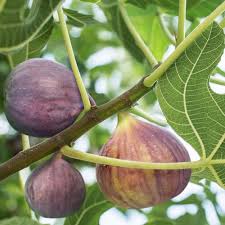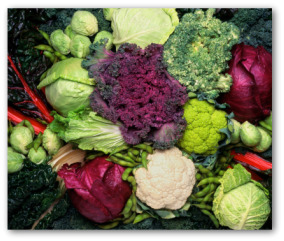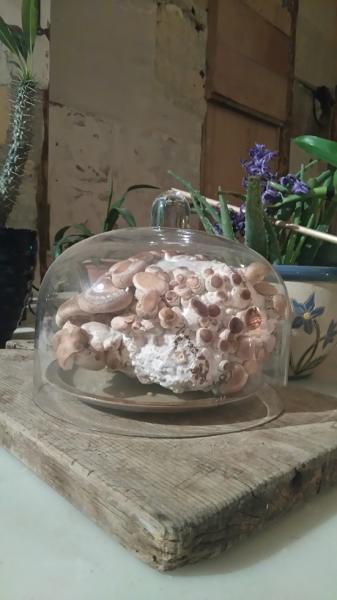The fig is one of the seven species with which the Land of Israel was blessed.
The tree that is first mentioned in the Torah is the fig tree. Some even claim that it is the fruit of the tree of knowledge in the Garden of Eden.
For me, it is one of the things I love about summer. Cold, ripe and juicy –on its own or as part of an invincible combination with various dishes.
Its scientific name is FicusCarica, which belongs to the Mulberry Family. The tree is deciduous, reaching a height of between 3 and 10 meters.
The fig’s shelf life is extremely short and therefore it is not particularly common in markets, unlike the dried fruit, which in ancient times was a major component of the local diet.
The figs get their purple color from anthocyanin – a powerful antioxidant, which helps balance blood cholesterol levels.
While the fig fruit is beneficial, the branches and leavesof the fig tree contain,among other things, psoralen, a photo-toxin, and contact with them or with the sap secreted from them can cause an inflammatory reaction. Also, the upper part of the leaves is rough and unpleasant.
The fig is rich in potassium, a mineral that helps balance blood pressure, among other things by excreting excess salt from the body. The fig we eat is actually not a real fruit but a spurious fruit. It is the inflorescence (collection of flowers) of the fig tree, in a closed round structure that is hollow, like a ball with flowers on the inner walls. The inflorescence is approximately 3-5 cm, light-green with a touch of purple, in a fleshy and hollow structure. The core varies between green or pink to dark red.
The figs typically ripen in two or three waves. Each wave lasts several weeks depending on the specie and the climatic conditions. The first or “breba” crop ripensbetween April and July, is less tasty and develops on last year's shoot growth. The main fig crop develops on the current year's shoot growth and ripens in the late summer or fall. The main crop is generally superior in quantity and quality.
Dried figs are a delicious snack and are a common ingredient of various dishes, such as pastries.
To health!
Yours,
Maggie's Garden Team
Forecast:
In the ORGANIC vegetable baskets we expect (draft only):
Cucumber
Tomato
Lettuce
Potato
Sweet potatoe
Eggplant
Pumpkin
Parsley
Swiss Chard
The Large organic vegetable baskets also include:
Onion
Sweet Potatoe
Coriander
In the ORGANIC fruit baskets (NEW – Increased variety, price – 70 Shekels)
Grapes
Dates
Pears
Melon
The large ORGANIC fruit baskets also include: ( NEW – Increased variety, price -100 Shekels)
Half watermelon
Mango
The ORGANIC Green Basket:
Leek
A kind of lettuce
Celery
Dill
Green onion
Sprouts
Kale
Basil
The thorns on the leaves of the cactus are visible, but those on the fruit are much less so. They are responsible for the many people walking around the country during the summer season, probing their palms, pulling out thorn after thorn.
In addition, it seems that the cactus is part of the typical Israeli landscapes, and indeed to this date it can be seen in most areas of the country (especially now, when the fruit is at it’s peak and small groups of cars are gatherednear bunches of cactusin an attempt to pick the fruit).
The cactus is not one of the seven species, שבעת המינים. It was not here in biblical times, there are no mosaics adorning broad-leaved cacti on the floors of ancient synagogues, nor will you find jewelry from the days of Jesus in the shape of sabra. Actually, this all makes sense, because it is a cactus.
Just like all it’s fellow cacti, it came from America. (Mexico takes pride in her cacti and displays the cactus on its flag.) From America it migrated to Spain, and by courtesy of the conquerors – also to the Mediterranean basin.
The cactus enjoys the Israeli climate, relatively speaking – it does get along with the amount of irrigation it receives (the origin of the name “Sabra” is in the Arabic word “tsabar”צבר- meaning patience.
The Israelis adopted the “sabra” as a symbol of the common Israeli, which is thorny and rough on the outside and rather sweet and soft on the inside (I would not necessarily describe the typical Israeli as patient, but maybe they are of a different specie). However, the climate here does not allow cacti seeds, the same seeds that creak between our teeth when eating the fruit, to germinate on their own when they meet the ground.
This is both bad news (for a cactus – because it depends onhuman assistance to reproduce, often in order to create a natural thorny barrier that is impenetrable by animals as well as humans – or at least some cactus leaves that will reproduce vegetatively.
In fact, these are not leaves but branches, but it is clear why it is easy to get confused) in terms of maintaining the specie. It is also good news – for the other growing species in our country, which are not threatened by this invasive specie, since its natural reproduction is limited.
The first to commercially grow Sabrain Israel, aka prickly pear, were the Ottomans, who used the fruit to produce a scarlet colored dye from them. Today, prickly pears are grown in agricultural farms, for local consumption as well as export –at a scale of several dozen tons a year.
In the wild, the peak of the season is just before the end of summer, but on the farm it is ripe for several months longer. The fruit is rich with vitamin C, magnesium and antioxidants.
It is considered beneficial for digestion, counteracts the development of cancer cells in the stomach and digestive system, improves the body's ability to reduce cholesterol levels and also balances sugar levels.
How do we deal with the thorns? With fire and water and a knife: hold the fruit with a pair of tongs and pass through the flame for a few seconds, soak in water and mix with a spoon (so that the fruits bump the sides of the bowl and each other causing the thorns to fall out), or simply lay on a cutting board, Hold in place with a fork, and cut both ends off with a knife.
You can then make a shallow groove in the skin and peel it off the heart of the fruit. By the way, cacti leaves can also be used, although they are not nearly as popular as the fruit: young leaves can be peeled, diced and soaked for a day or two in water to remove the mucous membranes. These can be added fresh to a salad, pickled or even cooked.
To health!
Yours,
Maggie's Garden Team
Forecast:
In the ORGANIC vegetable baskets we expect (draft only):
Cucumber
Tomato
Lettuce
Potato
Onion
Eggplant
Pumpkin
Parsley
The Large organic vegetable baskets also include:
Raddish
Sweet Potatoe
Coriander
In the ORGANIC fruit baskets (NEW – Increased variety, price – 70 Shekels)
Grapes
Dates
Pears
Melon
The large ORGANIC fruit baskets also include: ( NEW – Increased variety, price -100 Shekels)
Half watermelon
Nectarine
The ORGANIC Green Basket:
Leek
A kind of lettuce
Celery
Dill
Green onion
Sprouts
Green Beans
The thorns on the leaves of the cactus are visible, but those on the fruit are much less so. They are responsible for the many people walking around the country during the summer season, probing their palms, pulling out thorn after thorn.
In addition, it seems that the cactus is part of the typical Israeli landscapes, and indeed to this date it can be seen in most areas of the country (especially now, when the fruit is at it’s peak and small groups of cars are gatherednear bunches of cactusin an attempt to pick the fruit).
The cactus is not one of the seven species, שבעת המינים. It was not here in biblical times, there are no mosaics adorning broad-leaved cacti on the floors of ancient synagogues, nor will you find jewelry from the days of Jesus in the shape of sabra. Actually, this all makes sense, because it is a cactus.
Just like all it’s fellow cacti, it came from America. (Mexico takes pride in her cacti and displays the cactus on its flag.) From America it migrated to Spain, and by courtesy of the conquerors – also to the Mediterranean basin.
The cactus enjoys the Israeli climate, relatively speaking – it does get along with the amount of irrigation it receives (the origin of the name “Sabra” is in the Arabic word “tsabar”צבר- meaning patience.
The Israelis adopted the “sabra” as a symbol of the common Israeli, which is thorny and rough on the outside and rather sweet and soft on the inside (I would not necessarily describe the typical Israeli as patient, but maybe they are of a different specie). However, the climate here does not allow cacti seeds, the same seeds that creak between our teeth when eating the fruit, to germinate on their own when they meet the ground.
This is both bad news (for a cactus – because it depends onhuman assistance to reproduce, often in order to create a natural thorny barrier that is impenetrable by animals as well as humans – or at least some cactus leaves that will reproduce vegetatively.
In fact, these are not leaves but branches, but it is clear why it is easy to get confused) in terms of maintaining the specie. It is also good news – for the other growing species in our country, which are not threatened by this invasive specie, since its natural reproduction is limited.
The first to commercially grow Sabrain Israel, aka prickly pear, were the Ottomans, who used the fruit to produce a scarlet colored dye from them. Today, prickly pears are grown in agricultural farms, for local consumption as well as export –at a scale of several dozen tons a year.
In the wild, the peak of the season is just before the end of summer, but on the farm it is ripe for several months longer. The fruit is rich with vitamin C, magnesium and antioxidants.
It is considered beneficial for digestion, counteracts the development of cancer cells in the stomach and digestive system, improves the body's ability to reduce cholesterol levels and also balances sugar levels.
How do we deal with the thorns? With fire and water and a knife: hold the fruit with a pair of tongs and pass through the flame for a few seconds, soak in water and mix with a spoon (so that the fruits bump the sides of the bowl and each other causing the thorns to fall out), or simply lay on a cutting board, Hold in place with a fork, and cut both ends off with a knife.
You can then make a shallow groove in the skin and peel it off the heart of the fruit. By the way, cacti leaves can also be used, although they are not nearly as popular as the fruit: young leaves can be peeled, diced and soaked for a day or two in water to remove the mucous membranes. These can be added fresh to a salad, pickled or even cooked.
To health!
Yours,
Maggie's Garden Team
Forecast:
In the ORGANIC vegetable baskets we expect (draft only):
Cucumber
Tomato
Lettuce
Potato
Onion
Eggplant
Pumpkin
Parsley
The Large organic vegetable baskets also include:
Raddish
Sweet Potatoe
Coriander
In the ORGANIC fruit baskets (NEW – Increased variety, price – 70 Shekels)
Grapes
Dates
Pears
Melon
The large ORGANIC fruit baskets also include: ( NEW – Increased variety, price -100 Shekels)
Half watermelon
Nectarine
The ORGANIC Green Basket:
Leek
A kind of lettuce
Celery
Dill
Green onion
Sprouts
Green Beans















